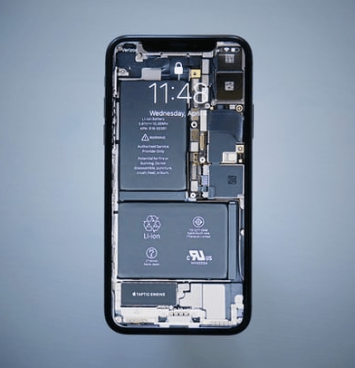
Battery technology is nothing short of a game-changer. I mean, can you even imagine life without your trusty smartphone or laptop? Not to mention electric cars! And let’s not forget the impact batteries have had on the renewable energy industry. The advancements in battery tech have paved the way for a cleaner, more sustainable future and I think it’s safe to say that it’s one of the most important technological breakthroughs of our time.
Batteries are simply amazing. They store energy that can then be used to power all sorts of devices and vehicles. And let me tell you, batteries have come a long way since the days of bulky lead-acid batteries. Today, the most commonly used battery is the lithium-ion battery, which is known for its high energy density and long cycle life. These babies are everywhere – in our electric cars, smartphones, laptops, and power tools.
The rise of electric vehicles has been a huge driving force behind innovation in battery technology. As more and more people embrace EVs as their primary mode of transportation, the demand for advanced and reliable batteries has skyrocketed. So, manufacturers have been working tirelessly to develop new battery chemistries and designs that store more energy, last longer, and are safer and more affordable. And the results are impressive! We’re seeing exciting advancements like solid-state batteries that promise to be lighter, safer, and more efficient than traditional lithium-ion batteries.
Battery tech is also playing a critical role in the growth of the renewable energy industry. Renewable energy sources like solar and wind power are being adopted all over the world, and batteries are essential to making this transition possible. They help store excess energy produced by these sources so it can be used when needed. This not only reduces our dependence on fossil fuels but also ensures a more stable and reliable energy supply.
And let’s not forget the impact batteries have had on the consumer electronics industry. Portable devices like smartphones, laptops, and tablets rely on batteries to keep them powered and running. Manufacturers have been working hard to improve battery performance and efficiency in these devices, making them lighter, longer-lasting, and faster-charging. This has had a huge impact on the way we use technology, making it more accessible and convenient than ever before.
Battery technology has had an enormous impact on our daily lives and the way we use technology. From powering our smartphones and laptops to driving our electric cars and storing energy from renewable sources, batteries have become an essential part of our modern world. And it’s no exaggeration to say that the advancements in battery tech have played a critical role in shaping our future and creating a more sustainable planet.
When we look back at the history of batteries, it’s clear to see just how far we’ve come. In the early days, batteries were bulky, heavy, and had limited capabilities. But as technology has advanced, so have batteries. Today, the most commonly used battery is the lithium-ion battery, which offers high energy density and long cycle life, making it ideal for a wide range of applications. The widespread use of lithium-ion batteries in our devices and vehicles has revolutionized the way we live, work, and play.
One of the biggest drivers behind innovation in battery technology has been the rise of electric vehicles. As more and more people adopt EVs as their primary mode of transportation, the demand for advanced, reliable batteries has increased significantly. To meet this demand, manufacturers have been working hard to develop new battery chemistries and designs that store more energy, last longer, and are safer and more affordable. These efforts have led to exciting breakthroughs in battery technology, including the development of solid-state batteries, which have the potential to be lighter, safer, and more efficient than traditional lithium-ion batteries.
From powering our smartphones and laptops to driving our electric cars and storing energy from renewable sources, batteries have become an essential part of our modern world.
Battery technology has also had a significant impact on the renewable energy industry. Renewable energy sources like solar and wind power are becoming more popular all over the world, and batteries are playing a critical role in making this transition possible. By storing excess energy produced by these sources, batteries help to reduce our dependence on fossil fuels and ensure a more stable and reliable energy supply. This is an important step towards creating a cleaner, greener planet and reducing our carbon footprint.
In the consumer electronics industry, batteries have had a profound impact on the way we use technology. Portable devices like smartphones, laptops, and tablets rely on batteries to keep them powered and running, and manufacturers have been working hard to improve battery performance and efficiency. The result is lighter, longer-lasting, and faster-charging devices that have changed the way we interact with technology. Whether you’re using your smartphone to keep in touch with friends and family, working remotely from your laptop, or streaming movies and TV shows on your tablet, batteries have made all of this possible.
Types of Batteries
There are several types of batteries, each with its own unique characteristics and uses. Some of the most common types of batteries include:
Primary batteries: These batteries are designed to be used once and then discarded. Examples of primary batteries include alkaline batteries, zinc-carbon batteries, and lithium primary batteries. Primary batteries, also known as disposable batteries, are a one-time use battery that is designed to be used until it is depleted, and then disposed of. They are often used in low-drain devices, such as remote controls, flashlights, and smoke detectors. Primary batteries are convenient because they are ready to use right out of the package and do not require recharging. However, they are not as cost-effective as rechargeable batteries in the long run, as they must be constantly replaced.
Secondary batteries: These batteries can be recharged and used multiple times. Examples of secondary batteries include lead-acid batteries, nickel-cadmium (NiCad) batteries, nickel-metal Hydride (NiMH) batteries, and lithium-ion batteries. Secondary batteries, also known as rechargeable batteries, are batteries that can be recharged and used multiple times. They are commonly used in high-drain devices, such as laptops, smartphones, and electric vehicles. Secondary batteries are more cost-effective than primary batteries over time, as they can be recharged and used repeatedly. However, they are typically more expensive upfront, and they also require a charging device.
Flow batteries: These batteries store energy in chemical fluids that are held in separate tanks. The fluids are pumped through a cell where they react to produce electricity. Flow batteries are often used in large-scale energy storage systems. Flow batteries are a type of rechargeable battery that store energy in chemical fluids that are held in separate tanks. The fluids are pumped through a cell where they react to produce electricity. Flow batteries are often used in large-scale energy storage systems because they can provide a large amount of energy storage in a compact form factor. Additionally, flow batteries can be easily scaled up or down to meet the changing energy demands of a system.
Sodium-sulfur batteries: These batteries use molten sodium and sulfur to store and release energy. Sodium-sulfur batteries are often used in grid-scale energy storage applications. Sodium-sulfur batteries are a type of rechargeable battery that uses molten sodium and sulfur to store and release energy. Sodium-sulfur batteries are often used in grid-scale energy storage applications because they have a high energy density and a long cycle life. Additionally, they are relatively low-cost and have a relatively low environmental impact compared to other types of batteries.
Zinc-air batteries: These batteries use air as the oxidizing agent and zinc as the fuel. They have a high energy density and are often used in hearing aids and other small devices. Zinc-air batteries are a type of primary battery that uses air as the oxidizing agent and zinc as the fuel. They have a high energy density and are often used in hearing aids and other small devices because they are small and lightweight. Zinc-air batteries are also relatively inexpensive and readily available. However, they have a relatively short shelf life and must be replaced often.
Solid state batteries: These batteries use a solid electrolyte material instead of a liquid or gel electrolyte. Solid state batteries have many advantages over traditional batteries, including increased safety and energy density. Solid state batteries are a new type of battery technology that uses a solid electrolyte material instead of a liquid or gel electrolyte. Solid state batteries have many advantages over traditional batteries, including increased safety, higher energy density, and a longer lifespan. However, there are still some challenges that must be overcome before solid state batteries can become widespread, including scaling up production and developing a solid electrolyte material that is both safe and stable.
Lithium Polymer batteries: These batteries use a solid polymer electrolyte material and are commonly used in portable electronic devices, such as smartphones and laptops. Lithium Polymer batteries, also known as Li-Poly or LiPo batteries, are a type of rechargeable battery that uses a solid polymer electrolyte material. They are commonly used in portable electronic devices, such as smartphones, laptops, and tablets. Lithium polymer batteries have several advantages over traditional lithium-ion batteries, including a lighter weight and a flexible form factor, which allows for easier integration into compact electronic devices. Additionally, Li-Poly batteries have a relatively low self-discharge rate, which means that they can hold a charge for a long time, even when not in use.
Lithium Iron Phosphate (LiFePO4) batteries: These batteries are a type of lithium-ion battery that use iron phosphate as the cathode material. They are often used in applications where high discharge rates and long cycle life are required, such as in electric vehicles. Lithium Iron Phosphate (LiFePO4) batteries are a type of lithium-ion battery that use iron phosphate as the cathode material. They are often used in applications where high discharge rates and long cycle life are required, such as in electric vehicles. LiFePO4 batteries have several advantages over other types of lithium-ion batteries, including a longer lifespan, increased safety, and a lower risk of thermal runaway. Additionally, LiFePO4 batteries have a relatively stable voltage profile, which makes them well-suited for use in high-power applications.
Redox flow batteries: These batteries are a type of flow battery that use two different fluids, one positive and one negative, to store energy. Redox flow batteries have the advantage of being able to store and release energy at a high rate. Redox flow batteries are a type of flow battery that use two different fluids, one positive and one negative, to store energy. The fluids are stored in separate tanks and are pumped through a cell where they react to produce electricity. Redox flow batteries have the advantage of being able to store and release energy at a high rate, which makes them well-suited for use in high-power applications. Additionally, redox flow batteries can be easily scaled up or down to meet the changing energy demands of a system.
Saltwater batteries: These batteries use saltwater as the electrolyte and are often marketed as a safe and environmentally friendly alternative to traditional batteries. Saltwater batteries are a type of battery that use saltwater as the electrolyte. They are often marketed as a safe and environmentally friendly alternative to traditional batteries, as the materials used in saltwater batteries are non-toxic and biodegradable. Saltwater batteries have several advantages over traditional batteries, including a long lifespan, high reliability, and low cost. However, they also have some disadvantages, such as a relatively low energy density and a limited charging rate, which means that they may not be well-suited for high-power applications.
Metal-air batteries: These batteries use air as the oxidizing agent and a metal as the fuel, such as zinc-air or aluminum-air batteries. They have a high energy density and are often used in applications where weight and space are limited. Metal-air batteries are a type of primary battery that use air as the oxidizing agent and a metal as the fuel, such as zinc-air or aluminum-air batteries. They have a high energy density, which makes them well-suited for use in applications where weight and space are limited. Metal-air batteries are also relatively inexpensive and readily available. However, they have some disadvantages, such as a relatively short shelf life and a limited charging rate, which means that they may not be well-suited for high-power applications.
Supercapacitors: These devices store energy in an electric field and can quickly release energy in high-power applications. Supercapacitors are often used in conjunction with other types of batteries to provide high power and long cycle life. Supercapacitors are energy storage devices that store energy in an electric field. They can quickly release energy in high-power applications, making them well-suited for use in applications such as regenerative braking systems in electric vehicles. Supercapacitors have several advantages over traditional batteries, including a much faster charging time and a longer lifespan. However, they also have some disadvantages, such as a lower energy density, which means that they may not be well-suited for use in applications that require a lot of energy storage.
Each type of battery has its own unique advantages and disadvantages, and the choice of which type of battery to use depends on the specific application and the required performance characteristics.
Solid State Battery
Solid state batteries are a new type of battery technology that promises to revolutionize the way we store and use energy. Unlike traditional batteries that use liquid or gel electrolytes to transport ions between the electrodes, solid state batteries use a solid electrolyte material. This change in the way the battery functions has numerous benefits that could make solid state batteries a game-changer in the world of energy storage.
One of the most significant advantages of solid state batteries is their increased safety. Traditional batteries can pose a fire risk if they are damaged or punctured, which can cause the liquid electrolyte to leak. With solid state batteries, there is no liquid electrolyte to leak, so the risk of fire is much lower. This makes solid state batteries a much safer option for applications such as electric vehicles, where the battery is a critical component.
Another advantage of solid state batteries is their increased energy density. Energy density is a measure of how much energy a battery can store in a given amount of space. Solid state batteries have a much higher energy density than traditional batteries, which means they can store more energy in the same size. This is particularly important for electric vehicles, where the size and weight of the battery have a big impact on the range and performance of the vehicle. With solid state batteries, it is possible to create smaller, lighter, and more efficient batteries that can increase the range of electric vehicles.
Solid state batteries also have a longer lifespan than traditional batteries. This is because the solid electrolyte material is less prone to degradation than the liquid or gel electrolytes used in traditional batteries. This means that solid state batteries will last longer and provide more consistent performance over their lifetime. This is especially important for applications such as energy storage systems, where the battery must be able to provide reliable performance for many years.
Despite the many benefits of solid state batteries, there are still some challenges that must be overcome before they can become widespread. One of the biggest challenges is scaling up production to meet the growing demand for batteries. Another challenge is developing a solid electrolyte material that is both safe and stable, and can be produced on a large scale. There is also ongoing research into developing new solid state battery chemistries that can further increase the energy density and performance of the batteries.
Despite these challenges, the future of solid state batteries is bright. With their increased safety, energy density, and lifespan, they have the potential to revolutionize the way we store and use energy. Whether it’s powering electric vehicles, providing backup power for homes and businesses, or enabling large-scale energy storage systems, solid state batteries are poised to play a critical role in the energy landscape of the future.
Trademark Disclaimer:
All trademarks, logos, and brand names are the property of their respective owners. All company, product, and service names used in this website are for identification purposes only. Use of these names trademarks, and brands, specifications do not imply endorsement.







